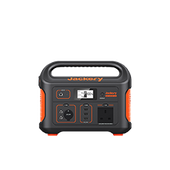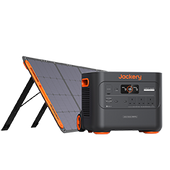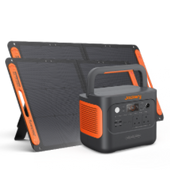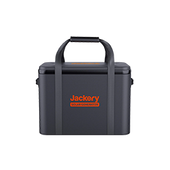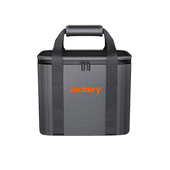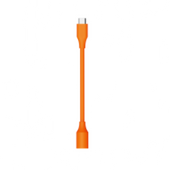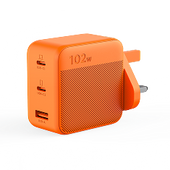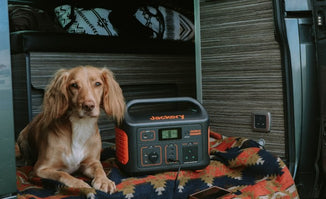Careful planning is necessary when preparing for a fishing trip, balancing the thrill of the chase and the need for supplies. Whether you're going fishing for a few hours or several days, make sure your phone is charged, your fish finder is working, and your underwater cameras are ready to go.
Power banks provide a dependable electricity supply to charge your devices when travelling off-grid or offshore. This guide will show you everything about the best fishing power banks in the UK, including their importance, types, and factors to consider.
As for the best fishing power banks, we highly recommend Jackery Portable Power Stations, which are portable, lightweight, and powerful. The multiple charging methods ensure your solar fishing power bank is always chargeable.
|
Key Takeaways: |
|
The lifespan of a power bank can vary based on usage and quality, with many lasting several years if well maintained. A power bank's internal battery stores energy in chemical form after being charged by an external power source, like a wall outlet. Generally speaking, the fishing power bank ranges from 300 to 1,000 cycles. If I had to advise you, you should avoid any power bank with fewer than 500 charge cycles. There are three fishing power banks: the standard, wireless, and solar. We recommend solar chargers like Jackery Explorer 300 Plus or 100 Plus. When choosing the fishing power bank, consider its capacity, power output, portability, and charging methods. |
What Is A Fishing Power Bank?
When you go fishing, a fishing power bank can charge your electronic gadgets because it functions like a portable battery. Imagine that the battery on your phone is about to run out while you're out and about.
Put your gadget into the power bank and carry on with your day rather than scurrying around looking for an outlet. These devices frequently feature USB connections for global compatibility, and some even support wireless charging.
Fishing power bank features:
- High Capacity: It can charge devices multiple times and is helpful for extended fishing trips.
- Durability: Often built to withstand wet conditions, drops, and rough handling.
- Multiple Ports: Provides various charging options for phones, cameras, or other gear.
- Built-in Lights: Some models include LED lights for better visibility during nighttime fishing.
Why Do You Need A Fishing Power Bank?
Fishing power banks are compact, lightweight electrical energy storage devices for charging. Their rechargeable lithium-ion batteries have a long storage life. It transmits energy by USB to another electronic device, revitalising your devices while depleting its own.
Each power bank model has a different capacity for holding charges. Smaller, lighter units typically have less energy storage capacity than more giant "bricks," but the latter should be able to charge your gadgets repeatedly and fully.
The following are some reasons why you need a fishing power bank in the UK:
Ability to Stay in Contact
If you're old enough, you may recall a time when cell phones were the size of water bottles, had an antenna that could be extended, and could only be used for making calls. Even with the plethora of contemporary cell phone uses, texting and making calls remain functional. This feature helps inform friends and family when on a backcountry excursion, and it's vital in an emergency.
Digital Navigation
Since the invention of GPS, there has been discussion on the relative merits of digital navigation against using a map and compass. Advocates of the conventional method frequently contend that since compasses and maps don't rely on power, they are more dependable. They also emphasise that mastering their proper use improves the user's backcountry acumen.
Illuminate Your Adventures
The best headlights available today typically have a USB-chargeable lithium-ion battery.
If you use it on a high beam for several hours, your headlamp will eventually need to be recharged.
Because headlamps are so lightweight, it's standard procedure always to have a spare on hand. This implies that you should only need to charge light in an emergency and can give your communications and navigation devices top priority. Camping lanterns and flashlights operate on the same basis.
Less Essential Gadgets and Apps Need Power
While in the backcountry, other devices can require some battery life. Finding out your Kindle is dead on arrival after spending the entire day anticipating getting into the book you're loving may be rather depressing.
You may have agreed with the kids that they can spend some time on screens while you're camping, but this won't happen if they forget to charge their tablets. These days, cooking equipment at campsites can even be charged via USB.
How Does A Fishing Power Bank Work?
A fishing power bank's internal battery stores energy in chemical form after being charged by an external power source, like a wall outlet. The battery uses the output port to transfer electrical energy to the linked device when needed.

How long will fishing power banks last?
The quality of the power bank's construction and the amount of use it receives determine how long it will last. Power banks differ in how many charge-discharge cycles they have, which is determined by the battery core and other essential parts. Generally speaking, this ranges from 300 to 1,000 cycles. We had better not use any power bank with fewer than 500 charge cycles.
How long will a 500-cycle power bank survive if you charge it to total capacity once daily on average? We can solve that using the straightforward formula below:
Power Bank Lifespan = Charge Cycles * Charging Rate / Using Rate
The number of times you fully charge the power bank daily is known as the "using rate." As was already noted, the charging rate of a 10,000mAh power bank is roughly 2.25.
Its lifespan is 500 * 2.25 / 1 = 1125 days = 3.08 years if it has 500 charging cycles.
How many times can a power bank charge your devices while fishing?
Having a dependable power source for your electronics is crucial when you're out fishing. The capacity of a power bank and the battery size of your smartphone determine how many charges it can deliver.
|
Power Bank Capacity |
Charging Times |
|
10,000mAh Power Bank |
This size can usually charge a regular smartphone three times (with a capacity of roughly 3,000mAh). You can receive additional costs if you own smaller gadgets like Bluetooth speakers or action cameras. |
|
20,000mAh Power Bank |
With its bigger capacity, this smartphone can be charged around six times, which makes it an excellent option for longer journeys or while using multiple devices. |
|
30,000mAh or Higher |
These high-capacity power banks are ideal for prolonged fishing trips because they can adequately charge various electronics, such as tablets or larger gadgets. |
Types of Fishing Power Banks
Having a dependable power source for your electronics is essential when sailing. The following three categories of fishing power banks in the UK are widely available:

1. Standard Power Bank
The most often used portable power bank varieties in small sizes are these regular or portable power banks, which are easy to carry anywhere. As long as your phone is sufficiently charged, these power banks work with wires to connect it to them.
A power bank's charging time is contingent upon several things. For example, some power banks can charge themselves in 3–4 hours and last all day because they enable quick input.
Pros:
- Portable: Power banks are compact and convenient to transport.
- Cost-effective: Power banks are often less expensive than portable power stations.
- Versatile: Power banks can recharge various gadgets, such as smartphones, tablets, laptops, and smartwatches.
- Beneficial in emergencies: Power banks might prove advantageous when a power socket is inoperative.
Cons:
- Longevity: The longevity of power banks is contingent upon regular charging to preserve their lifespan.
- Possible issues: Power banks may encounter problems including inadequate charging, physical impairment, and inability to retain a charge.
- Compatibility: Certain gadgets may lack compatibility with magnetic power banks.
- Charging velocity: Wireless power banks may charge slower than cable connections.
2. Wireless Power Bank
Next on the list of many power bank kinds is the wireless power bank. As the name implies, you may change your gadget by placing it on the power bank; no cables are needed. A battery stores energy produced by charging coils in a wireless power bank. It functions more like a wireless charger for trips.
Wireless power banks are popular among travellers, businesses, and regular selfie shooters. Having a cordless power bank to charge your phone is invaluable when there aren't many wall outlets.
Pros:
- Easy to use: It's easy to use because you don't need cords or adapters and can charge multiple devices simultaneously.
- Looking good: Cable-free wireless charging could be the way of the future.
- Lessen wear and tear: charging wirelessly can help your device's ports last longer.
Cons:
- Compatibility: Not all gadgets can be charged wirelessly.
- Speed of charging: Charging wirelessly takes longer than charging with a cord.
- Efficient: Charging wirelessly isn't as efficient as charging with a cord, which can make charging take longer.
- Cost: Magnetic power banks may cost more than regular power banks.
- Bulk: Batteries that you carry around with you can be big and heavy.
3. Solar Power Bank
As its name suggests, a solar power bank uses solar energy to charge itself before being used to charge other electrical devices. Solar energy is used after being stored as solar packs in the battery.
Your solar power bank will last a full day if you keep it in a well-lit place for several hours.
This eco-friendly phone charging method helps you save electricity outdoors. One of their most significant drawbacks is that solar power banks work less well on cloudy days.
However, the solar power bank, like Jackery Portable Power Station, has multiple charging methods and pass-through charging ability, which can be recharged by wall outlets, solar panels, or carports, and enables it to be used in cloudy or even at night.

Solar power banks offer numerous benefits, including environmental sustainability, portability, and energy storage capabilities.
Pros:
- Ecologically sustainable: Solar energy is a renewable resource that is universally accessible and consistently available daily.
- Portable: Numerous solar power banks possess sufficient portability for convenient transport.
- Multiple-charging methods: Solar power banks accumulate energy during daylight for further utilisation. Specific solar chargers can furthermore be powered via an electrical cable.
- Nomaintenance: Solar systems possess few moving components and infrequently require upkeep.
Cons:
- Costly to acquire: Solar power banks can be costly to purchase and replace.
- Restricted energy storage: Certain solar power banks have constrained energy storage capability.
Jackery Portable Power Stations for Fishing
Electric fishing rods & reels, GPS devices, sonar fish finders, and boats necessitate power. Envision yourself during a fishing expedition when your boat fails to start or your electric fish finder malfunctions due to your oversight in charging it. What would be your feelings in response? Are you anxious? Angry? A portable power station can fulfil all your power needs.

The Jackery Portable Power Stations are optimal for fishing excursions necessitating solar energy to operate your equipment. It can be taken on your boat.
This implies that you may not need to detach your boat's heavy battery, as you can transport the charger to the battery instead. All Jackery Portable Power Stations are portable, silent, and environmentally friendly, allowing for use without disrupting your fishing activities.
|
Product |
Jackery Explorer 100 Plus |
Jackery Explorer 300 Plus |
|
Capacity |
99.2 Wh / 31000 mAh 3.2V |
288Wh |
|
Life Cycle |
2000 Cycles, Up to 80%+ Capacity |
1500 cycles to 80%+ capacity |
|
Battery Cell |
LiFePO4 battery |
LiFePO4 battery |
|
Dimension |
3.43x3.41x4.96 in |
6.6x6.1x9.1 in |
|
Recharging Methods |
Explorer 100 Plus + 1*SolarSaga 100W: 2H; USB-C Charging: 4H; Car Charging: 2.5H |
Explorer 300 Plus + 1*SolarSaga 200W: 4H; USB-C Charging: 4H; Car Charging: 5.5H; Wall Charging: 2H |
|
Output Ports |
1*USB-A: 18W Max, 5V⎓3A, 9V⎓2A, 12V⎓1.5A; 2*USB-C: 100W Max, 4.5V⎓5A, 5V⎓3A, 5V⎓4.5A, 9V⎓3A, 12V⎓3A, 15V⎓3A, 20V⎓5A 1*USB-C PD: 100W Max, 5V⎓3A, 9V⎓3A, 12V⎓3A, 15V⎓3A, 20V⎓5A |
1*AC Output: 230V~50Hz,1.31A, 300W Rated, 600W Max; 1*USB-A: 15W Max. 5V⎓3A; 2*USB-C: 100W Max,5V⎓3A, 9V⎓3A, 12V⎓3A, 15V⎓3A, 20V⎓5A; 1*Carport: 12V⎓10A |
Jackery Explorer 100 Plus
The Jackery Explorer 100 Plus has a LiFePO4 battery that endures 2,000 cycles while maintaining 80% of its capacity. Weighing only 965 grammes, it offers portable power conveniently within your grasp, making it ideal for fishing.
MPPT technology guarantees 99% efficiency in solar charging. A complete DC input requires 1.8 hours, whereas solar charging with a single SolarSaga 100W Solar Panel necessitates 2 hours. Jackery provides comprehensive solutions for all scenarios, including automobile charging, various alternative charging ways, and during power outages.
It includes a complete set of protective features, such as low-temperature protection, over-temperature protection, short circuit protection, over-current protection, over-voltage protection, and a low-voltage warning system to guarantee reliable and safe operation. It is suitable for outdoor activities, particularly fishing.

Jackery Explorer 300 Plus
The Jackery Explorer 300 Plus portable power station is a lightweight and efficient power source that fulfils energy requirements for diverse scenarios, including fishing, camping, biking, RVing, and emergency power backup.
This power station features a distinctive Battery Management System (BMS). The gadget incorporates 52 safety measures and 12 BMS algorithms that collaboratively provide the utmost safety for both the device and any connected appliances. It includes four types of physical security to guarantee the safety of all individuals.
This model is distinguished by its sophisticated app control feature, enabling users to manage the battery efficiently via Wi-Fi or Bluetooth. This renders it more contemporary and user-friendly. Weighing merely 8.27 pounds, it is an exceptional option for individuals frequently in fishing.

How to Choose The Best Fishing Power Banks?
When selecting the ideal fishing power bank in the UK, bear the following considerations in mind:
- Capacity
When contemplating a generator that runs on batteries, the capacity should be considered first. Is it able to charge anything you require? You could do this by doing a quick calculation, which would involve noting each device's power requirements and determining whether or not each piece of equipment could be charged using the power bank's battery.
If so, for what duration? Power banks can typically run multiple gadgets simultaneously, but not continuously - not for a whole night. Thus, could you stay away from them?
- Power Output
Power output denotes the quantity of electrical power produced by the PPS. Consider the power requirements of your devices for activation and operation, then select a PPS that provides equivalent to or greater energy output.
Seek many output options, including AC and DC outlets, USB ports, and automotive plugs, to guarantee compatibility of your gadgets with the power bank.
- Portability
The ideal dimensions and mass of the PPS will be contingent upon its intended application. If you want to transport it on a smaller vessel and size is paramount, you must select a smaller PPS. Certain PPS are sufficiently compact to store in bags for convenient enhanced portability. Nonetheless, this necessitates compromises in battery capacity and power output.
- Charging Methods
Conventional charging methods may be inaccessible based on your intended power bank use. For instance, if you want to embark on an off-grid fishing weekend, you will need more than charging the power bank via a wall outlet.
Charging options such as solar panels or DC automobile adapters will be essential for recharging the power station. Jackery Solar Panels seamlessly enhance any Jackery Portable Power Station, ensuring a dependable power source while off-grid.
Tips for Using Fishing Power Banks
Whether travelling with friends or on a solo excursion, careful planning and preparation can increase the trip's success and enjoyment. The following are some crucial pointers for preparing for your fishing excursions with a power bank.

Optimise Power Consumption: If you want to maximise your solar power bank, use it wisely when fishing. It's crucial to put devices and tools that need power all the time, like fish finders, GPS, and contact devices, at the top of the list. This way, you can be sure you'll have enough power for the trip.
Charge During Day Time: Set up your solar panels early in the morning so they get the first light of the day. This will keep them charged all day. Be sure to charge your power bank or only use artificial light before the last minute. Your power bank will work best if you charge it during the day. This way, your power bank will be fully charged before you go fishing.
Utilise Pass-Through Charging: Some solar power banks, like Jackery Portable Power Stations, can be charged without being connected to a wall. With this function, you can charge the power bank and charge your devices at the same time.
If your power bank has pass-through charging, you can connect your devices straight to it while the solar panels charge it. Being smart about electricity ensures you have enough to charge and run your fishing gear.
Notice Weather Conditions: The weather can change how well your solar power bank works. Solar energy is the primary energy source, but charging may work better on dark or overcast days. Keep an eye on the weather reports and plan your fishing trips around them. In case it rains, it's wise to have extra power sources ready or make sure your solar power bank is fully charged before you go.
Consider Long-Term Trips: Solar power banks are an excellent way to get power. But if you're going on a more extended fishing trip, it's wise to have some backup plans. You should bring extra batteries, portable solar panels, or other charging options like car adapters or AC adapters to ensure you can charge your devices and power banks.
Fishing Power Bank FAQs
The following are the frequently asked questions about the fishing power banks in the UK:
- Do solar chargers still work on cloudy days?
On cloudy days, smaller solar chargers or panels cannot provide enough power to charge electronics efficiently. On an overcast day, a larger panel should still be able to provide enough electricity to charge a smartphone. Whether the solar panel was previously charged by the sun or at home, solar chargers or solar battery banks with onboard energy storage can.
- Do portable solar chargers work?
Indeed. Portable solar panels do function efficiently in bright sunlight and when orientated correctly. What are the required amps for a solar charger? A solar panel or charger that can provide at least 2.4 amps, which is the minimum amount of electricity needed to charge a USB device, is what most people prefer.
- Do power banks damage phone batteries?
Power banks are made to offer a risk-free, effective means of recharging your electronics. Reputable power banks also have safety features like short circuit protection, temperature control, and overcurrent protection for further security.
Final Thoughts
As you research and prepare for your next fishing trip, remember the importance of a fishing power bank. Not only do they provide reliable energy to keep any of your fishing gadgets and devices powered, but almost any portable appliance. Such a convenient solar power bank will add more convenience to your fishing experience and make you feel more comfortable.









